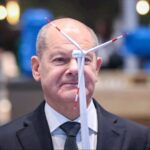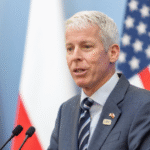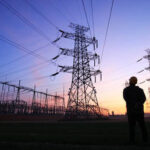Energy News Beat
ENB Pub Note: This article is from Doug Sheridan on LinkedIn. As he is an industry thought leader, we recommend following his articles and discussions. In this case, he brings up some fantastic points in Germany’s energy policy shortcomings. Renewable energy is neither sustainable nor environmentally friendly. We are seeing the UK, Germany, New Jersey, Delaware, California, and a few other places doubling down on green energy policies. We are seeing the EU doubling and tripling down on ESG carbon capture or carbon credit rating systems, which have the potential to target businesses in the United States.
What this means to consumers is a pattern of high energy costs and a total lack of understanding of how the electrical grid needs to function. Wind and solar have their place, but it is not a key source of dispatchable power.
The Editorial Board of the WSJ writes, Germany has invested so many hundreds of billions of euros in its green energy transition over the years that no one can tally the precise amount. Yet the share of wind and solar power in the country’s energy mix in Q1 of this year managed to fall—by a lot. There’s a lesson for the US here.
Renewable sources made up some 47% of electricity consumption in Europe’s largest economy in Q1 2025. That’s down from 56% in Q1 the first three months of 2024. The drop comes despite Germany’s continuing build-out of renewable generation. The country has added 872 wind turbines with a capacity of 4.3 GW since April 2024, yet wind-power output fell 16%. Ouch.
You can guess what went wrong. Feb and Mar were unusually wind-free, onshore and offshore. A lack of rain meant hydropower underperformed. March was sunnier than usual, which helped to boost solar-electricity output compared to a year earlier. But we’re talking about Germany in March. Relatively short daylight hours in a northern latitude meant this boost wasn’t enough to offset the decline in wind generation.
These climactic conditions happen regularly enough that the German language has a word for it— Dunkelflaute, or “dark stillness.” It means renewables alone can’t power an advanced industrial economy, as even Berlin is starting to notice.
The new coalition agreement that will form the basis for incoming Chancellor Friedrich Merz’s agenda envisions building 20 GW of natural-gas-fired power generation by 2030 to provide stable base power. But Merz’s left-right coalition commits to continuing a renewable build-out, too. Good luck with all that, since an overreliance on intermittent renewables tends to make it uneconomical to run natural-gas plants as a backup. Expect more subsidies in the future.
Germany is further down the road of renewable power than many other large economies. Its energy mess is enough to make everyone else realize it’s not an example to follow.
Our Take: The Board has it right. Because renewables simply cannot deliver reliable power during certain parts of the year, Germany must build and maintain a shadow fleet of dispatchable thermal general generation. If it’s fun to invest and pay twice or three times more than necessary for reliable power, Germans are poised to have a ball.
The post WSJ writes, Germany spends hundreds of billions on green energy, but the share of wind and solar falls. appeared first on Energy News Beat.









